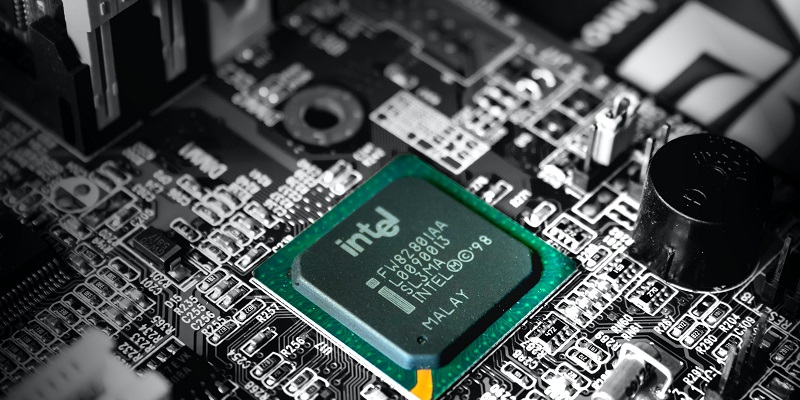In an era where artificial intelligence (AI) is rapidly reshaping industries and driving technological advancements, Intel has taken a significant step towards bringing AI capabilities to personal computing. With the launch of its AI acceleration program for PC software, Intel aims to revolutionize the way AI is integrated into everyday computing tasks. This article explores the details of Intel’s AI acceleration program, the integration of AI in their latest laptop processors, the importance of local AI processing, developer encouragement, AI’s impact on video compression, accelerating deep learning models through Intel’s Neural Processing Unit (NPU), leveraging the NPU for improved video processing, the perception of the NPU as a valuable resource, the combined power of NPU, GPU, and CPU for AI tasks, and the marketing strategy of associating “Intel Inside” with “AI Inside” on PCs.
Integration of AI in Intel’s 14th-gen ‘Meteor Lake’ Core Ultra chips
Intel has made a breakthrough by introducing AI capabilities within its 14th-gen ‘Meteor Lake’ Core Ultra chips for laptops. This integration signifies a significant leap in performance and functionality, allowing AI to be seamlessly incorporated into various computing tasks. By harnessing the power of AI, Intel’s latest processors promise enhanced multitasking, improved efficiency, and intelligent decision-making capabilities.
The AI Acceleration Program and the importance of local AI processing
Intel’s AI Acceleration Program aims to educate and convince consumers about the merits of running AI locally on their PCs. While cloud-based AI processing has gained traction, local AI processing offers distinct advantages. With faster processing speed, enhanced privacy, and improved efficiency, running AI on local machines ensures a seamless user experience, free from latency and dependence on internet connectivity. Furthermore, local AI processing empowers users to maintain control over their data and facilitates real-time decision-making.
Encouraging developers to leverage Intel’s AI engine
To unlock the full potential of AI acceleration on PCs, Intel encourages developers to write code natively for their AI engine or use the OpenVINO developer kit. By doing so, developers gain access to a comprehensive set of tools and libraries that optimize AI performance on Intel processors. This approach not only empowers developers but also fosters innovation and the creation of groundbreaking AI applications across diverse industries.
AI’s Impact on Video Compression
One of the most significant areas where AI can revolutionize computing is video compression. Deep Render, a video processing company, claims that AI can enable video compression to be processed five times faster than conventional methods. This groundbreaking advancement has far-reaching implications for industries such as video streaming, surveillance, and video conferencing, where efficient compression improves bandwidth utilization, lowers storage costs, and enhances overall user experiences.
Accelerating deep learning models through Intel’s NPU
Intel’s Neural Processing Unit (NPU) is a specialized hardware component designed to accelerate AI workloads. Topaz Labs, a leading provider of image enhancement solutions, utilizes Intel’s NPU to accelerate their deep learning models. By harnessing the power of the NPU, Topaz Labs can significantly improve the speed and efficiency of their image enhancement algorithms, offering enhanced user experiences and reducing processing time.
Leveraging NPU for improved video processing
The NPU’s capabilities extend beyond deep learning models. XSplit, a popular live streaming software, claims to tap into the NPU to achieve greater video performance and accurate background removal in live videos. By offloading intensive video processing tasks to the NPU, XSplit ensures smooth streaming, higher frame rates, and enhanced visual quality. This utilization of the NPU opens doors to improved video-related applications, ranging from gaming to video editing.
Perceptions of NPU as a valuable resource
For developers, the NPU is seen as another valuable resource to harness for AI tasks. Just as developers leverage the power of CPUs and GPUs, the NPU offers an additional option to accelerate AI workloads. The ability to distribute the computational load across multiple hardware components allows for more efficient and optimized AI processing, unlocking new possibilities and driving innovation in AI technologies.
The combined power of NPU, GPU, and CPU for AI tasks
Intel’s perspective is that the combination of the NPU, GPU, and CPU may offer the best solution for accomplishing AI tasks. By leveraging the strengths of each component, Intel aims to deliver unparalleled performance, flexibility, and efficiency in AI computing. The NPU’s dedicated AI acceleration, GPU’s parallel processing capabilities, and CPU’s general-purpose computing power create a powerful trifecta for AI workloads, ensuring optimal utilization of resources and superior AI performance.
“Intel Inside” and its association with AI
Intel aims to position itself as a leader in AI technology by associating its iconic “Intel Inside” brand with “AI Inside” on PCs. This marketing strategy aims to create a strong connection between Intel and AI, cementing Intel’s reputation as the go-to brand for AI-powered computing devices. By fostering this association, Intel strives to instill confidence in consumers, highlighting the cutting-edge AI capabilities within their products.
Intel’s AI acceleration program marks a pivotal moment in the integration of AI in personal computing. From the seamless integration of AI capabilities in their latest laptop processors to the encouragement of developers to leverage their AI engine, Intel is driving innovation and empowering users to experience the benefits of local AI processing. With advancements in video compression, acceleration of deep learning models through the NPU, and improved video processing capabilities, Intel is revolutionizing the way AI is utilized across industries. Through strategic marketing initiatives, Intel seeks to position itself as a leader in AI-enabled computing devices, redefining the future of technology with intelligence at its core.

